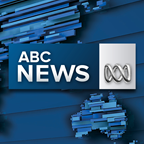
The Australian dollar was higher at noon despite dipping on the Reserve Bank’s negative outlook for the local economy.
At noon (AEST) today, the currency was trading at US71.27 cents, up from US70.90 cents yesterday.
The dollar surged clear of US71 cents in offshore trade overnight as investors appeared to welcome news that Malcolm Turnbull will replace Tony Abbott as prime minister.
It fell to an intraday low of US71.24 cents shortly after the Reserve Bank released the minutes to its September 1 interest rate decision, which kept the cash rate on hold at 2.0 per cent.
Commonwealth Bank currency strategist Joseph Capurso said the central bank’s commentary about downside risks for the Aussie dollar and the economy, largely linked to volatility on Chinese share markets, weighed on the local currency.
“The minutes are a bit out of date, which is why the falls have not been sustained,†he said.
“Since September 1, we have had better employment figures where the unemployment rate fell and the Chinese markets have stabilised.â€
Over the past 30 hours the currency has seen a high of US71.53c and a low of US70.63c.
Mr Turnbull last night won a party room ballot by 54 votes to 44 over Mr Abbott, while Julie Bishop comfortably won a vote to remain as deputy prime minister.
OM Financial senior client adviser Stuart Ive said the Australian dollar came under pressure when the leadership spill was announced yesterday, but rose after Mr Turnbull won.
He said it was hoped that the new prime minister will be a bit more proactive in getting the Australian economy going.
“The market decided that this was a good thing. Hence, the good performance in the Australian dollar despite stock markets coming off and metals being a little bit weaker overnight,†Mr Ive said. “Abbott was performing poorly in the polls, there was no real momentum behind the economy during his term, so a fresh person gives fresh thinking.â€
BK Asset Management managing director Kathy Lien said Australian dollar traders cheered Mr Abbott’s defeat.
“However, Turnbull won by a very small margin and internal divisions within his party could lead to continued political uncertainty,†she said.
The political news helped the currency to rise despite weaker commodity prices and a largely stronger US dollar as risk assets were sold off.
Given steady falls in oil and base metal prices, the local unit may have been expected to wilt under normal circumstances and trend back toward US70c.
Meanwhile, the US dollar was seen edging higher against a basket of leading currencies as investors showed caution ahead of this week’s Federal Reserve policy meeting.
The overnight action came amid pessimistic outlooks from local analysts, with all four big banks now tipping the Australian dollar to sink comfortably below US70c in the six months.
Most investment banks and financial services firms are in the same boat, with AMP Capital chief economist Shane Oliver pointing to an imminent Fed rate hike as a key reason for the downbeat forecasts.
“Notwithstanding occasional bounces, the broad trend in the Australian dollar is likely to remain down as the Fed is still likely to raise rates sometime in the next six months,†he said.
“The Australian dollar is expected to fall to US60c in the next year or so, with the risk that it will go even lower.â€
Business Spectator, AAP






 Add Category
Add Category